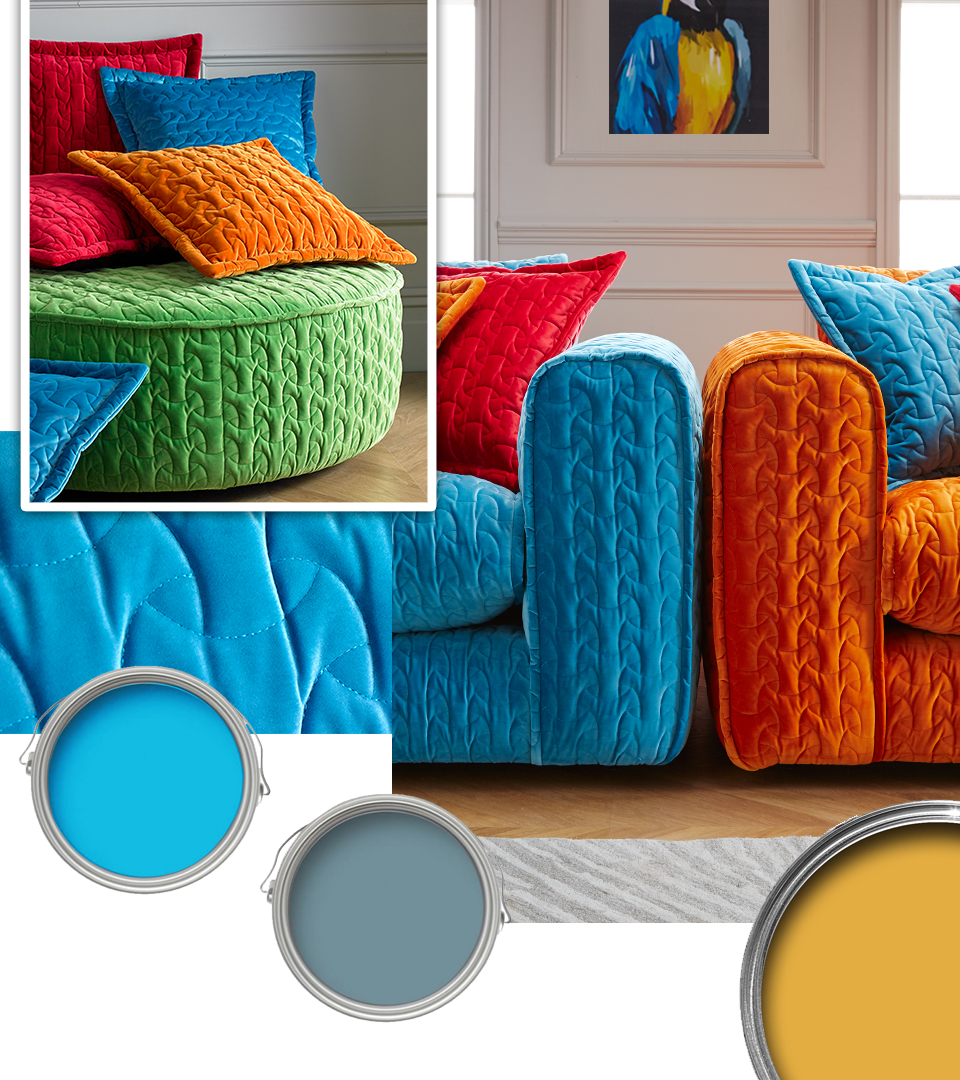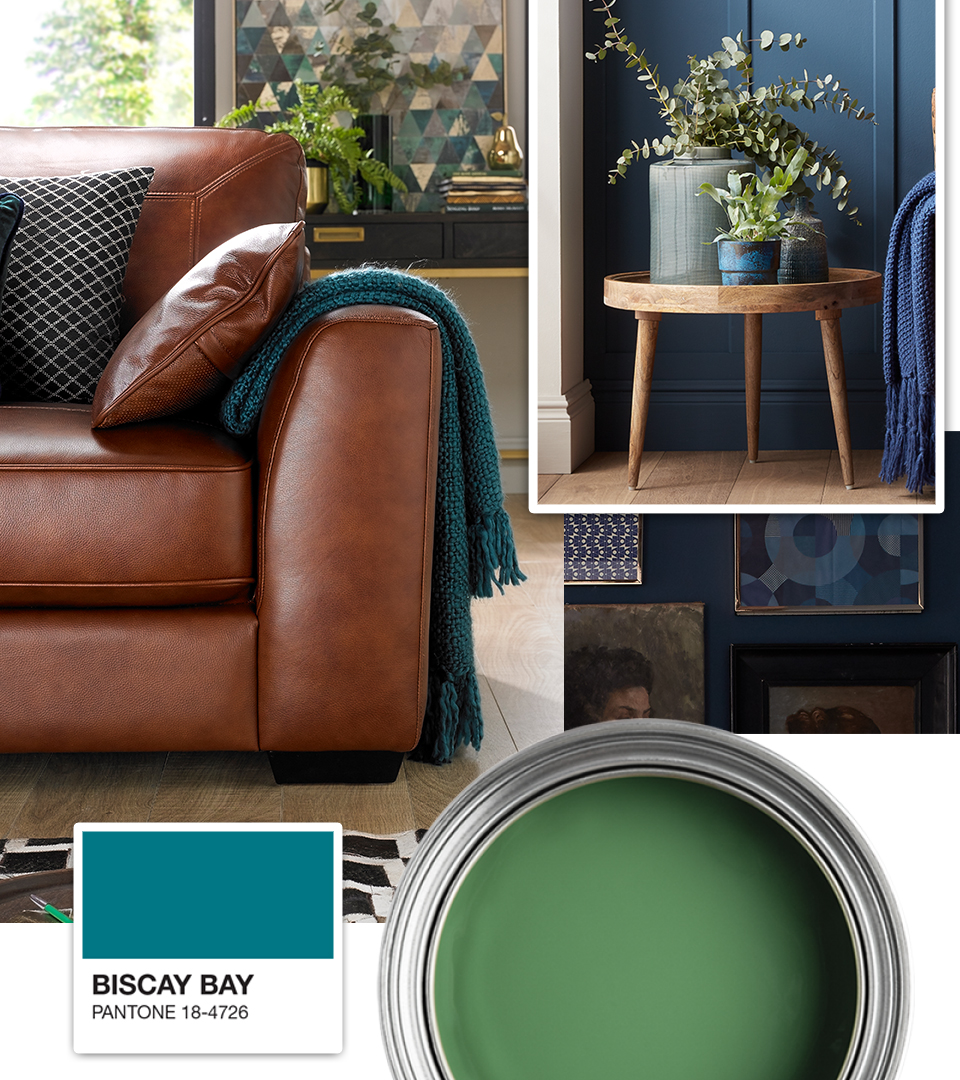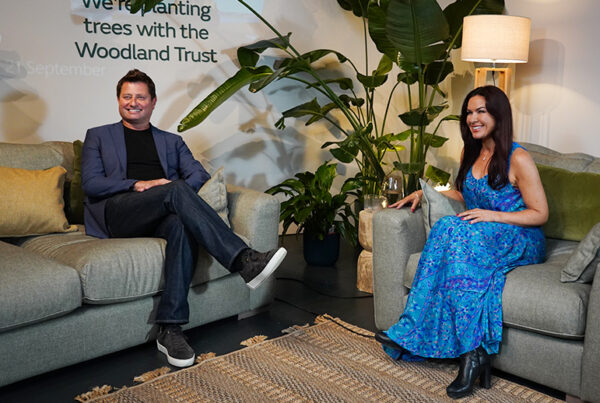Interior design in the home, when done right, is a fantastic way to express your personality, perfectly complement your lifestyle and interests, and help you achieve the ultimate in comfort at home.
There are many ways to go about creating the ideal design for your home, but key to any project is to start with planning. To make sure you’ve got your plan in place perfectly, take inspiration from the pros. Professional designers love to use mood boards to record ideas, gather influences and set design goals. From nailing down your colour palette to finding your favourite fabrics, mood boards give you the chance to lay everything out and make the right choices for you. Let us guide you through how to use mood boards in your home.
What are mood boards?
If you’d like to have a go at creating a mood board for a room makeover at home, you’ll find plenty of tools at your disposal, whether you choose to take your planning online or go old school.
Pinterest is just one of many digital boards that allows you to collect together images and products that you’d like to incorporate into your own space. Whenever you happen to stumble across a living room you love on a blog, or even just see a picture with a colour you think would suit your room, pin it to your board so you can come back to it later. Found an unusual light fixture that would help set the scene in your quirky living space? That goes on the board too. By pinning together images from around the web, you’ll be able to gather all your influences in one place, allowing you to visualise how your final design might piece together.
While a digital mood board is incredibly easy and convenient, there’s really no beating the old fashioned way. Getting your hands dirty and sticking fabric samples, images and literally anything else that inspires you to a physical mood board gives you a visual and tactile insight into what any room may end up looking, and feeling, like.
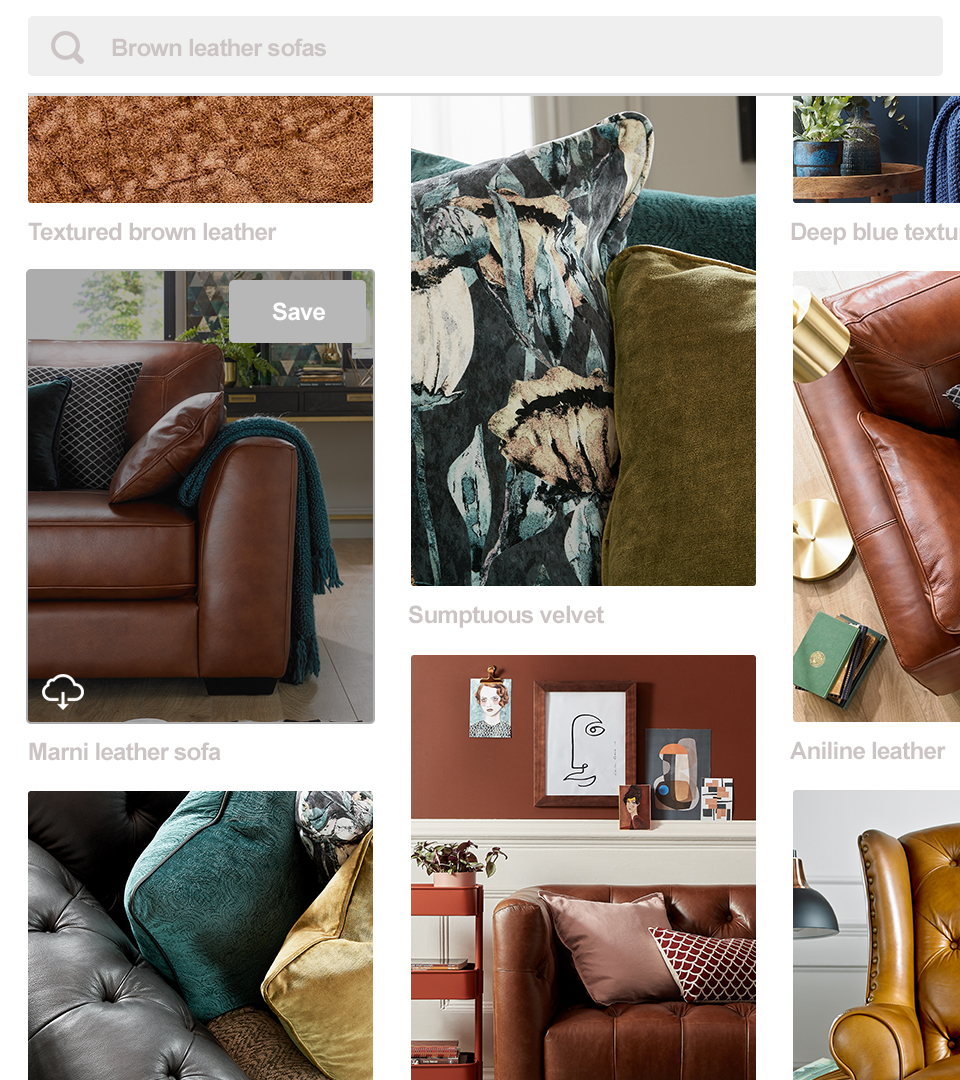
A mood board you can touch can really help you get an idea of how being in a room with a particular design layout would make you feel. By swapping things in and out as you find new inspirations, you can quickly explore what does and doesn’t work, ruling out different combinations and deciding which elements to take forward. And by firming up your ideas before you hit the shops, you’re less likely to be wasting time and money by buying things that don’t work later. Mood boards allow you to really set your ideas in stone before you even start, bringing vision to any design project.
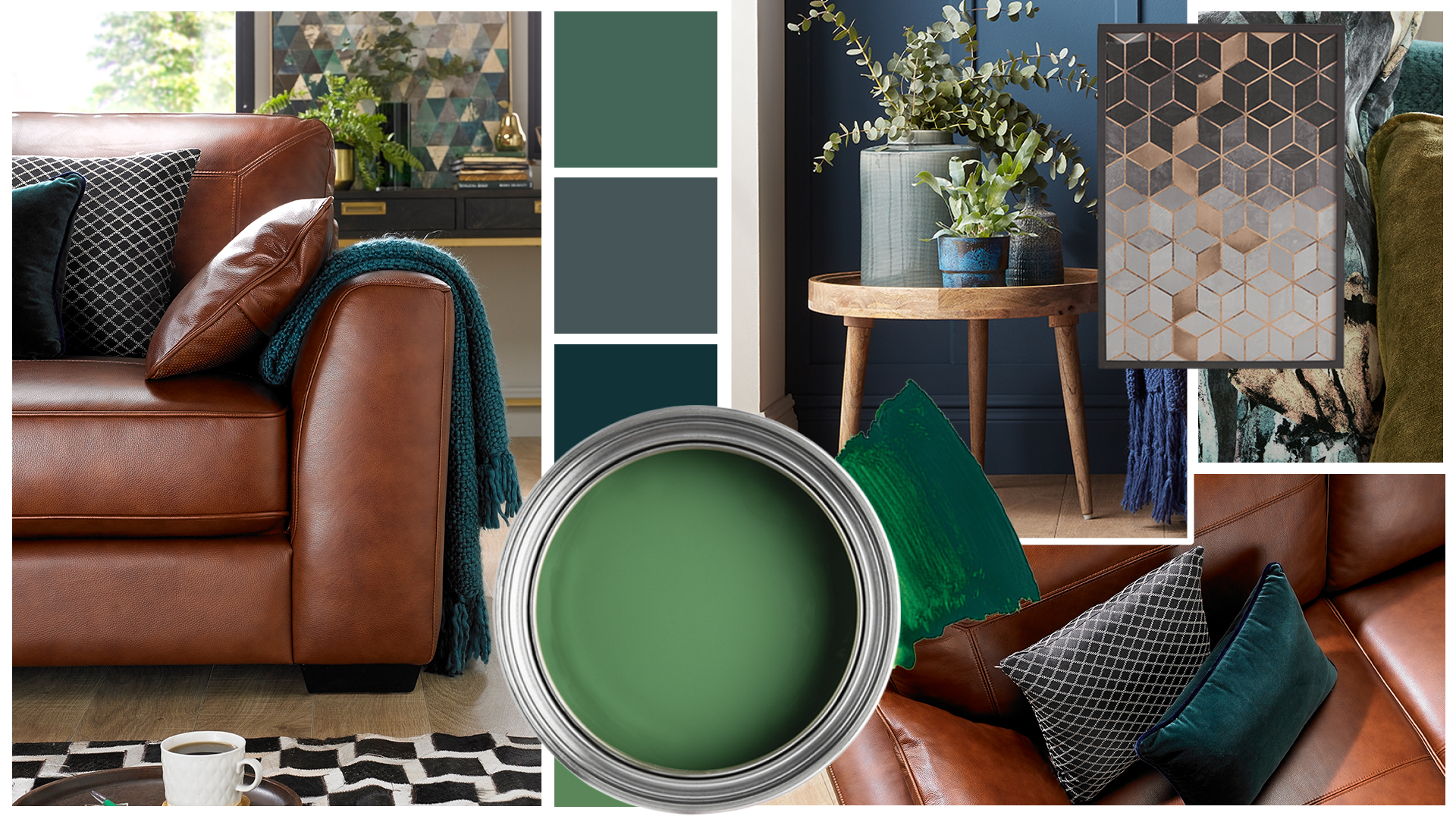
How to create a mood board
Creating your own mood board at home is incredibly easy! A strong piece of card or plywood will work well for your base, and then all you need are some pins or tape to start letting your imagination run wild.
The beauty of the process is that there are no rules about what you do with your mood board. Just let your passion and creativity flow and you’ll find you quickly start to flesh out an idea of how you want your living room to look. From magazine images to paint samples, collect images of styled rooms or fixtures, furnishings and accessories ideas from magazines, fabric swatches, and tester pots.
Inspiration can even be found on the move – a sideboard you spotted in your local café or the combination of colours in your flowerbed. The modern world means we’re never far from a smartphone, so just snap a quick photo wherever you find inspiration and print it out to stick on your board. When it’s time to sort through and stick, grab your stash. A cuppa and a biscuit might help to get your creative juices flowing, just make sure you don’t embellish your board with a spilled brew or crumbs!
Remember, it’s not just about the physical appearance of the room, you want to consider how you’d like to feel when you’re in the room and the ambience you’d like to set. Do you want to refresh a compact space so it feels warm and cosy? Maybe you want to inject some vintage glamour or you’re hoping to work with the clean lines of your apartment’s living room to create something sleek and modern so you don’t feel surrounded by clutter.
From the paint or paper on your walls through to a sofa you love, there are many layers to interior design. Aim to build up your board with this in mind. How would you like your flooring to feel underfoot? Will a statement leather sofa like the Rico give your room a real focal point? Or do you want something that will really pop with colour like the Candi to bring your room to life? Finding accent colours that work well with your colour scheme will make it even easier when you’re searching for the perfect sofa.
By refining and editing your board as you go, you can define the space you plan to decorate. Once you’ve settled on your board layout, put it on display in the room that’s featured. Think about moving it around the room too so you can see how fabrics and colours work with the light. You may want to revisit your board and make a few tweaks before finalising your plans. The beauty of a mood board is that you can do so as often as you need to, so you can make the right decision and create the perfect living room design for your home.
Ready to kickstart your new room design with your own mood board? Explore the huge range of sofas from Sofology to get you started and find your inspiration today.


